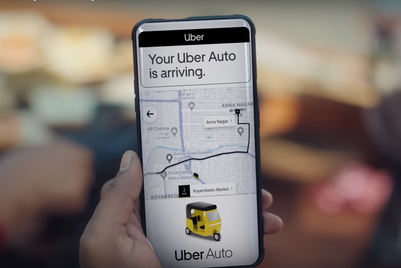
Uber, the US-based, app-driven luxury car service company, has chosen to rely on customer relationship management (CRM) for its Asian launch, to create what can only be described as a group of ‘uberholics’ in Asia.
Eschewing traditional advertising, they use their app’s built-in rating service and employ hyper-responsive community managers, who interact with users through SMS and email. Instant referral bonuses, discount deals and even special brunches for early adopters build goodwill among consumers, who in turn go out and evangelise for the brand.
Uber was one of the hottest Silicon Valley start-ups of 2010 and received a US$258 million investment from Google in 2013. Now in 70 countries, last year their service expanded to Asia, including Taipei, Singapore, Seoul, Shanghai, Kuala Lumpur, Bangalore, New Delhi and Manila. Unusually for a brand with little or no recognition in Asia, they have gone for a rather under-the-radar launch in each country, relying on social-CRM, word-of-mouth (WOM) marketing, events, and platforms such as WeChat and Weibo to push news and promotions. This seems to have had the effect of making users feel like members of a special club.
Launching a personal driver service in Asian cities, where taxis are cheap and many executives have private drivers, may seem audacious, but Uber’s head of Asia expansion Sam Gellman says it offers more than simply a way to get from A to B.
“Uber makes everything intuitive,” says Gellman. “It’s turning an experience that was once pretty stressful into something that’s actually a relaxing part of your day. And because drivers are rated, they’re very incentivised to deliver a good experience.
“The key is to have users who really want to tell your story, and then make it as easy as possible for them to do so. At the end of every trip, you’re given the option of sharing it on Facebook and Twitter, to send an email, to send an SMS; we make all that functionality very easy.”
Maintaining two-way communication to create valued consumers who promote the brand helps to build awareness in a scalable, manageable fashion. At the same time, it sets standards that must be upheld as demand grows.
“Their drivers are like the shopkeepers for them,” says Jerry Smith, regional president at OgilvyOne Asia-Pacific. “Provided that’s a good experience, then the word of mouth will be good. The moment their drivers don’t represent what they offer, and it’s not authentic, is when I think they will need to start using more aggressive marketing tactics around reputation management.”
Smith says that while launching purely with CRM is not common, fully integrated launches with an emphasis on social channels are becoming more widespread. He feels Uber needs to be careful about how to keep engaging customers. “Since the product is the service, they need to be careful not to get too pushy with consumers. Certainly trigger-based marketing could work very well for them, where they could look at patterns and create moments when they know consumers would probably be looking for the services,” he says.
“I think they’re using quite a smart acquisition process and at the same time they’re creating their scale without a massive investment, so this is actually a way that the medium works to their strategy.”
While launching without any above-the-line activity may not work for large global brands, whose products require a big revenue stream right away, it can be very effective for smaller or niche brands — but they must be confident they have a superior product or service if they intend to rely on word of mouth.
A good example of such a niche brand is Australian skincare company, Aesop, which has been growing organically for 27 years and now has 60 signature stores globally. It has never advertised, spending its marketing budgets on arts and cultural event sponsorship and strategic product placement in, for example, Cathay Pacific First Class. Like Uber, it wants customers to try the product, confident that they will like it and spread the word.
Asit Gupta, CEO and cofounder of Advocacy, says that social CRM, and building relationships with customers on social platforms is no passing fad, it should be part of every marketing plan in every country. He believes that WOM marketing and social CRM works best for brands that solve a real problem or fulfil a need, rather than for undifferentiated products, where it is harder to maintain a longer-term conversation with consumers. “Committing to building a real relationship is new to most brands,” says Gupta.
“As I see it, it has only advantages — but implementing it requires a structure change and skill upgrade. We need to think about community and conversation, not fans and content.”
He cites Starbucks as a good example of a powerful brand that not only delivers a great product experience, but also interacts authentically with its customers through its My Starbucks programme, rewarding and inviting members to co-create.
As to whether WOM marketing works best for specific kinds of brands or consumer demographics, Benjamin Duvall, co-founder of WOM agency Wildfire, believes every brand has a unique story, and it’s all about finding the ‘ah-ha’ message through social listening, insights and building content and experiences around that. “Every group relies upon peers for trusted advice,” says Duvall. “The channel may be a Weibo [microblog] or a baby or gaming forum, so brands must be pragmatic about where there targets are, and where they’re having conversations related to the brand — this might not be the big social networks.”


.jpg&h=334&w=500&q=100&v=20250320&c=1)
.jpg&h=334&w=500&q=100&v=20250320&c=1)
.jpg&h=334&w=500&q=100&v=20250320&c=1)




.png&h=334&w=500&q=100&v=20250320&c=1)








.png&h=268&w=401&q=100&v=20250320&c=1)
